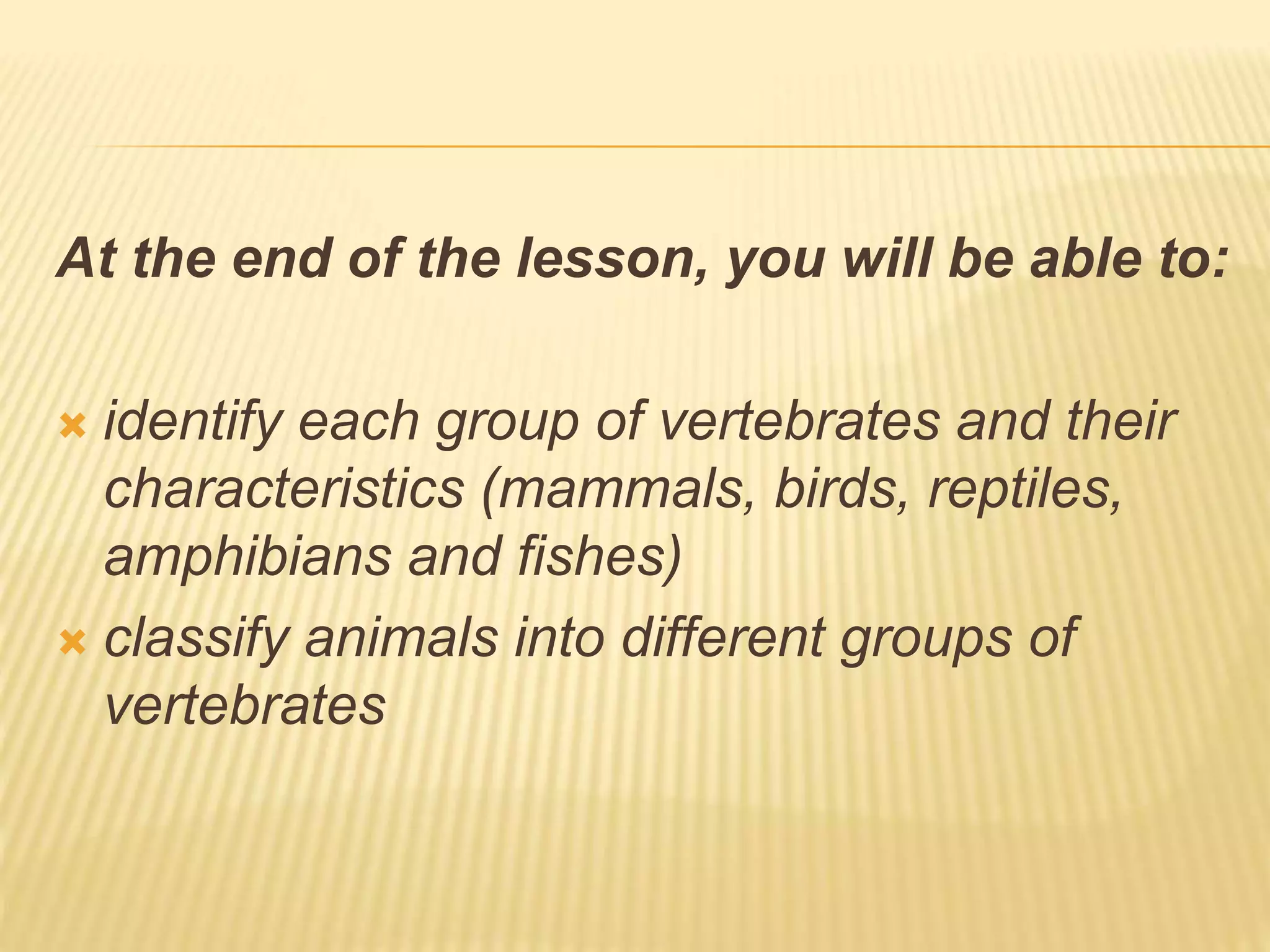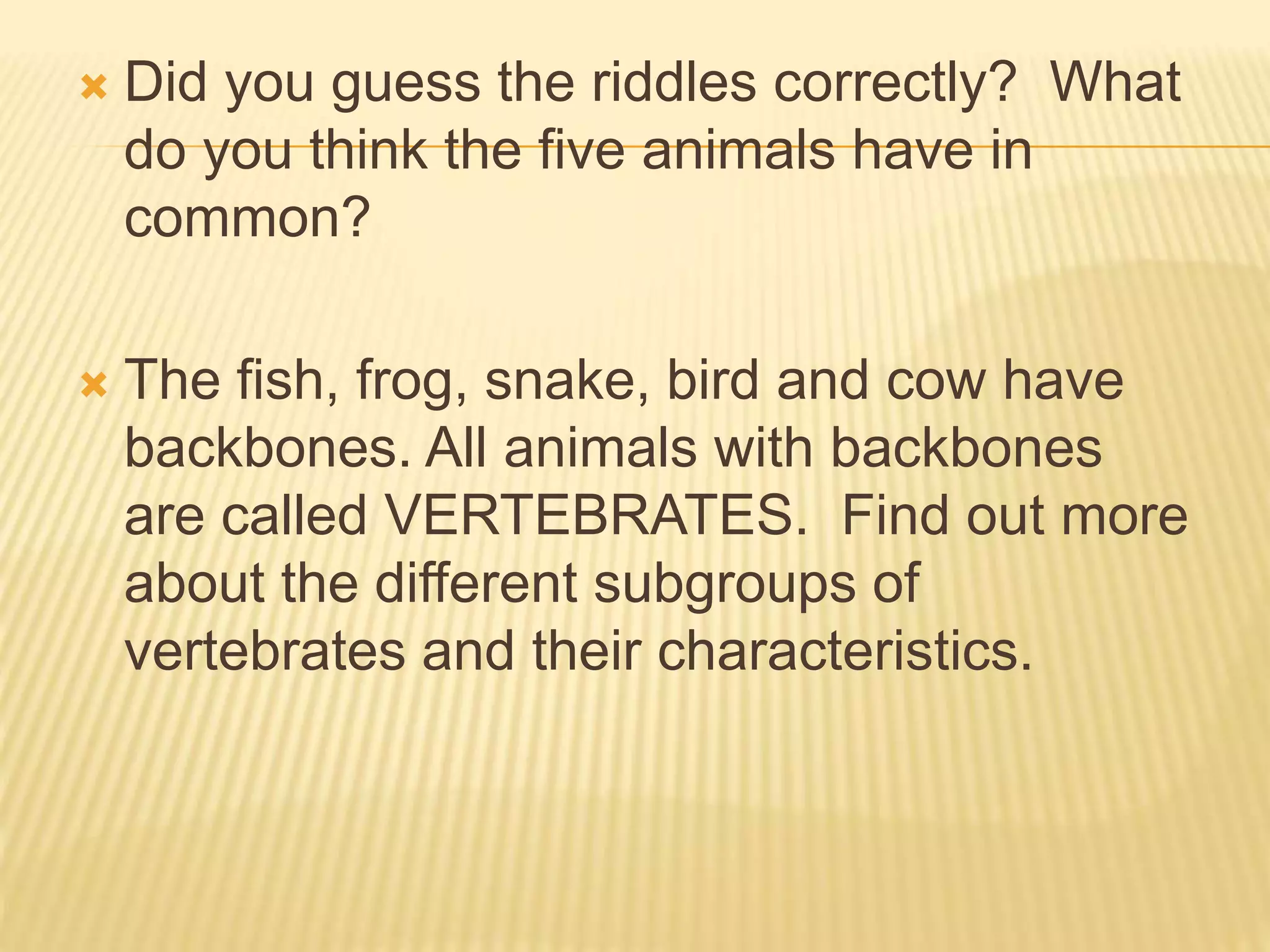The document discusses the five main groups of vertebrates: mammals, birds, reptiles, amphibians, and fish. Mammals have hair and feed their young milk. Birds are covered in feathers and have wings. Reptiles have scaly skin and lungs. Amphibians spend part of their life on land and part in water. Fish live entirely in water and breathe through gills.


















